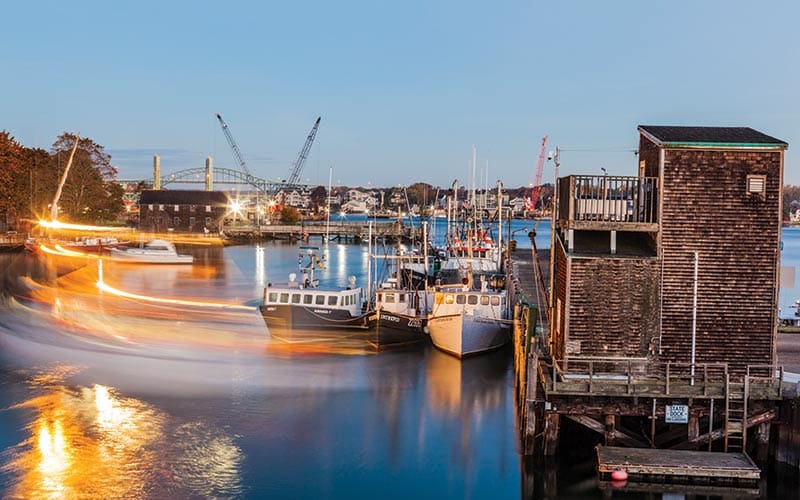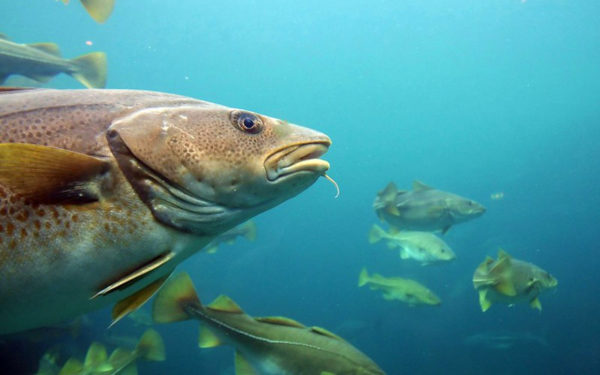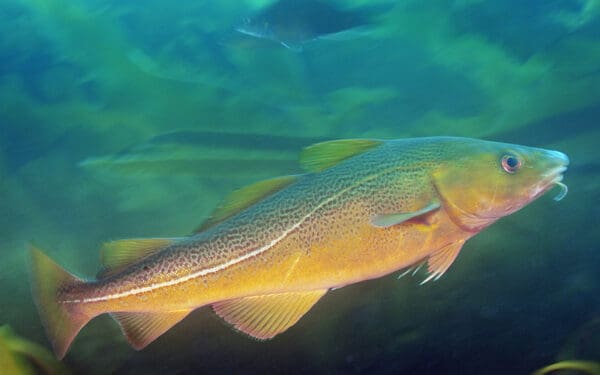
CLF's latest report – Fishing for a Future – identifies six key priorities that federal managers should work on to reform the sector program. Photo: EcoPhotography
On November 6, 2017, Carlos “The Codfather” Rafael reported to federal prison to begin serving a 46-month sentence for his admitted criminal activities while at the helm of the largest fishing operation in New England’s groundfish fishery.
That fishery has survived many ups and downs. Yet, this scandal left small-scale fishermen and their communities more frustrated than ever before. That’s why CLF took on the mission to examine the fishery’s management system – “the sector program.” This system has increasingly benefitted the wealthiest, most politically powerful operations centered in the region’s largest ports at the expense of the traditional community-based fishermen.
Through our latest report – Fishing for a Future – we present the findings and conclusions of this endeavor.
Who is Carlos “The Codfather” Rafael?
For more than two decades, Carlos Rafael dominated the New England groundfish fishery. He operated scores of fishing vessels and profited from a vertically integrated seafood empire under his control. “I am a pirate,” he once told fishery managers. “It’s your job to catch me.”
Rafael’s anarchist temperament and open contempt for regulations allowed him to thrive and expand while others foundered. Over the years, he had been charged with numerous violations, fined thousands of dollars, and even imprisoned. But, he continued to fish and profit from our public resources.
Finally, in 2015, Rafael’s dominance came to an end when undercover federal agents posed as Russian mobsters wanting to buy his empire. The agents recorded hours of The Codfather boasting of his criminal enterprises. As a result of this sting operation, the National Marine Fisheries Service and Justice Department brought comprehensive criminal and civil charges against Rafael, to which he ultimately admitted. In addition to several years of jail, he paid several millions of dollars in penalties and lost all his fishing permits and licenses. He was also permanently removed from the U.S. fishery system.
But, how did Rafael remain in the fishery for so long? And how could he maintain control of his fishing empire from prison until he finally sold it off in a multi-million-dollar deal? Through our report, CLF explored if we could learn any lessons from this scandal.
What is the sector program?
In 2010, the New England groundfish fishery adopted a new management system: the sector program. Sectors are self-organized groups of fishermen who receive an annual allotment of fish. For the most part, each group sets its own operating rules to harvest that fish. The sector is based on a common management approach known as catch shares. This approach takes into account the available annual fishing quota for each fish population and allocates specific fishing quotas to individuals, organizations, or communities.
As multiple groundfish populations were nearing collapse in the region in the late 2000s, catch shares were promoted as an alternative management tool that would increase flexibility and prosperity to the industry. Fishery managers also hoped this system would improve self-compliance, advance stewardship, and reduce overcapacity.
But after ten years, the sector program has not yielded the promised results of more abundant fish populations and more flexibility for fishermen. The groundfish fishery today is a shadow of what it once was. With multiple chronically overfished stocks, a steadily consolidating fleet, fewer fishing trips, and lower revenues per vessel, the traditional groundfish fishery is at risk of collapse. On top of this, aging fishermen, high barriers to entry for younger participants, and the biological impacts of climate change on the ocean paint a concerning future for the industry.
Many fishermen don’t believe that the sector program serves their best long-term interests, making them less likely to voluntarily comply with regulations. This lack of trust also harms the legitimacy of the entire program in the eyes of many fishermen. People with a criminal disposition like Rafael are readily able to take advantage of that discontent and profit at others’ expense. The lack of effective enforcement in the program, both from the industry and the government, provided Rafael with more than enough cover to build his criminal enterprise.
The poorly-designed sector program is not to blame for the current state of the fishery. The Codfather cheated before the sector program and in multiple fisheries. Federal enforcement allowed Rafael to stay in the fishery despite his chronic violations. Compliance with catch limits and other regulations, coupled with an underfunded and understaffed enforcement program, remains a large concern and would have created problems for any management system.
Reforming the Sector Program
The bottom line is that fishery managers failed to develop and implement the sector program consistent with available guidance and best practices for community-based catch share programs. That has contributed to many of the issues that persist in the groundfish fishery today and will continue to pull the fishery down unless corrected.
To address these issues, the fishery must move forward under a “smart compliance” policy. This approach focuses on strengthening the rewards for compliance and stewardship while improving external enforcement of rules and regulations to remove the bad actors.
We identified six specific areas for industry, fishery managers, scientists, and other stakeholders to focus their attention to advance such a policy:
1. A shared vision for the future: The industry must establish goals and objectives that support a shared vision across all sectors of the fishery for the future and can help guide management. The groundfish industry is diverse, but having a fishery that its participants believe in and want to succeed as well as a management system that aligns with those industry-developed goals can improve trust. Trust, in turn, increases voluntary compliance.
2. Unresolved quota allocation and accumulation issues: Access to sufficient quota is the only way to succeed in the groundfish fishery. But, equity issues around quota allocation and accumulation have existed since the beginning of the sector program. Fishery managers need to address these issues and promote the continued participation of community-based fishermen. Reduction of the maximum quota that any one entity can control and provision of affordable quotas for a “new entrants” program should be priorities.
3. Comprehensive participatory groundfish research program: Many fishermen and other industry members have questioned the science that supports management decisions for decades. While the existing science typically passes through a rigorous peer-review process, efforts to improve industry trust in the science have not succeeded. CLF encourages more direct collaboration between scientists and fishermen.
4. Use of social science: Fishermen are understandably frustrated with the management system and often do not feel heard. One way to improve this is through better use of the full spectrum of social sciences, not just economics, in decision-making. Fishery managers must collect better data in harbors across the region to understand how fishery policies are affecting traditional groundfish ports. And they must also use social sciences – like cultural anthropology, psychology, and political science – to improve understanding of how proposed management measures may impact fishermen and their communities.
5. Full catch accountability: Sustainable fishery management relies on knowing how many fish are caught. Fishermen need to be held fully accountable for their catch limits to prevent overfishing, support healthy fish populations, and supply accurate catch data to scientists setting the quotas. This is only achievable through 100% at-sea or electronic monitoring. So, fishery managers must implement Amendment 23, which aims to achieve broad-scale monitoring as quickly as possible.
6. Strengthened enforcement: The Codfather scandal left many in the industry wondering why they should comply with the rules if cheating paid off so well for Rafael despite his criminal and civil penalties. CLF will advocate for a strengthened enforcement system to level the playing field among all fishermen. We must ensure that chronic violators receive fair and effective penalties, including prompt removal from the fishery when appropriate.
Fishing for a Future
It is our hope that the recommendations outlined in Fishing for a Future will honor the legacy of New England’s groundfish fishery. Taking action now can help support the diverse, traditional, community-based groundfish operations and ports that once characterized New England’s coastlines.



